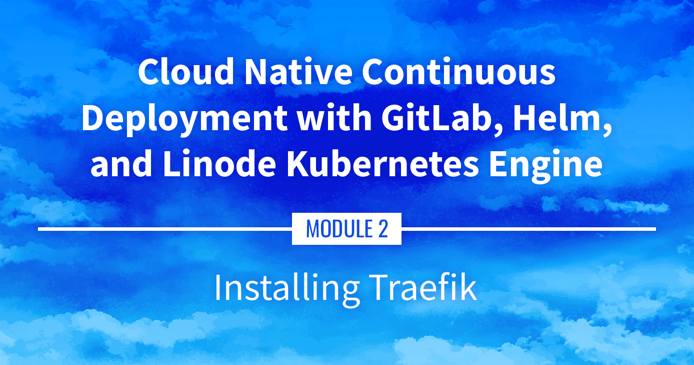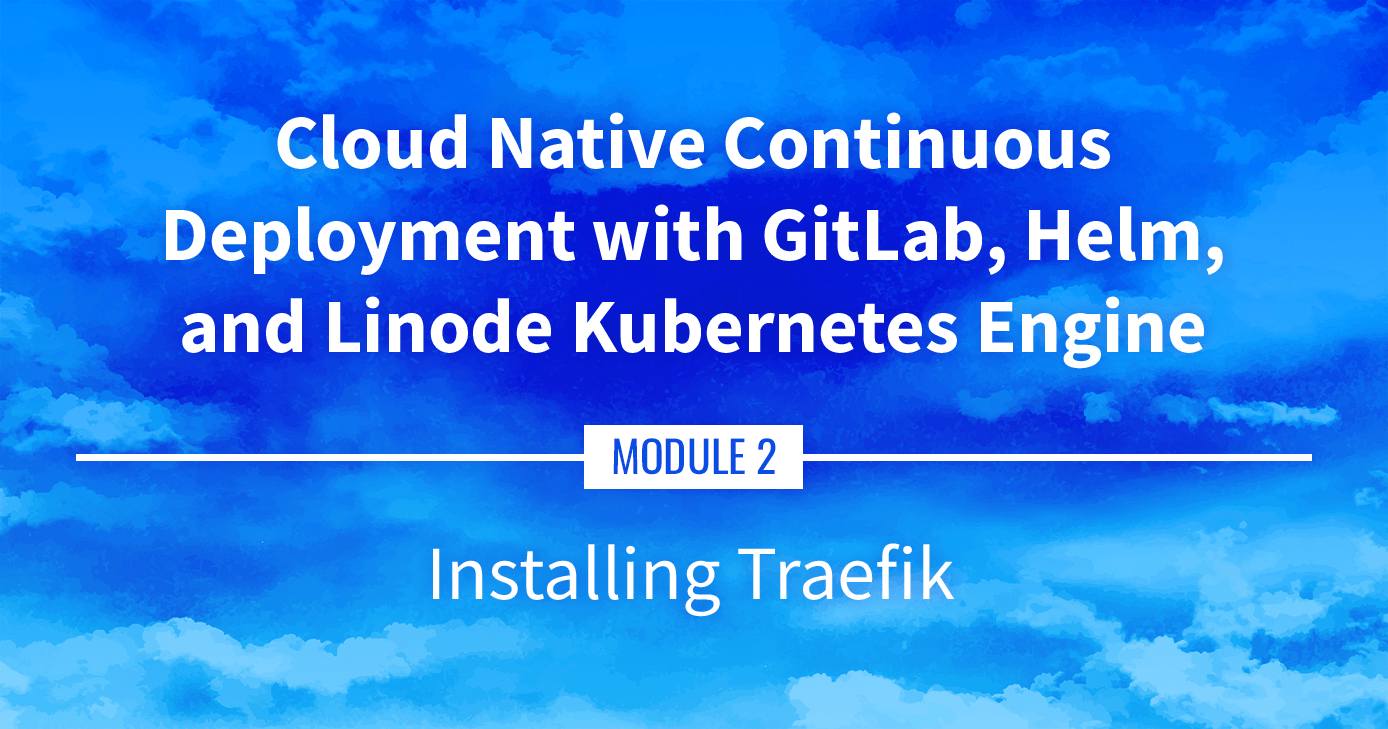Product docs and API reference are now on Akamai TechDocs.
Search product docs.
Search for “” in product docs.
Search API reference.
Search for “” in API reference.
Search Results
results matching
results
No Results
Filters
Building a CD Pipeline Using LKE (Part 9): Installing Traefik
Traducciones al EspañolEstamos traduciendo nuestros guías y tutoriales al Español. Es posible que usted esté viendo una traducción generada automáticamente. Estamos trabajando con traductores profesionales para verificar las traducciones de nuestro sitio web. Este proyecto es un trabajo en curso.



Watch the Presentation: Register to watch this workshop, free of charge.
Installing Traefik
Traefik is a popular Ingress Controller for Kubernetes, which manages external access to the cluster and provides load balancing functionality. This section discusses installing Traefik, configuring an Ingress within our YAML file, and testing things out.
Navigate the Series
- Main guide: Building a Continuous Deployment Pipeline Using LKE
- Previous section: Part 8: ExternalDNS
- Next section: Part 10: Installing metrics-server
Presentation Text
Here’s a copy of the text contained within this section of the presentation. A link to the source file can be found within each slide of the presentation. Some formatting may have been changed.
Installing Traefik
Traefik is going to be our Ingress Controller
Let’s install it with a Helm chart, in its own namespace
First, let’s add the Traefik chart repository:
helm repo add traefik https://helm.traefik.io/traefikThen, install the chart:
helm upgrade --install traefik traefik/traefik \ --create-namespace --namespace traefik \ --set "ports.websecure.tls.enabled=true"
(that option that we added enables HTTPS, it will be useful later!)
Testing Traefik
Let’s create an Ingress resource!
If we’re using Kubernetes 1.20 or later, we can simply do this:
kubectl create ingress web \--rule=ingress-is-fun.cloudnative.party/*=web:80(make sure to update and use your own domain)
Check that the Ingress was correctly created:
kubectl get ingress kubectl describe ingress
If we’re using Kubernetes 1.19 or earlier, we’ll need some YAML
Creating an Ingress with YAML
This is how we do it with YAML:
kubectl apply -f- <<EOF apiVersion: networking.k8s.io/v1 kind: Ingress metadata: name: web spec: rules: - host: ingress-is-fun.cloudnative.party http: paths: - path: / backend: serviceName: web servicePort: 80 EOF
Ingress versions…
- Note how we used the latest
v1Ingress version on the previous YAML, as thevibeta1api version has been deprecated.
Does it work?
- Try to connect to the Ingress host name (in my example, http://ingress-is-fun.cloudnative.party/)
- Normally, it doesn’t work (yet) 🤔
- Let’s look at
kubectl get ingressagain - ExternalDNS is trying to create records mapping HOSTS to ADDRESS
- But the ADDRESS field is currently empty!
- We need to tell Traefik to fill that ADDRESS field
Reconfiguring Traefik
There is a “magic” flag to tell Traefik to update the address status field
Let’s update our Traefik install:
helm upgrade --install traefik traefik/traefik \ --create-namespace --namespace traefik \ --set "ports.websecure.tls.enabled=true" \ --set "providers.kubernetesIngress.publishedService.enabled=true"
Checking what we did
- Check the output of
kubectl get ingress(there should be an address now) - Check the logs of ExternalDNS (there should be a mention of the new DNS record)
- Try again to connect to the HTTP address (now it should work)
- Note that some of these operations might take a minute or two (be patient!)
This page was originally published on
